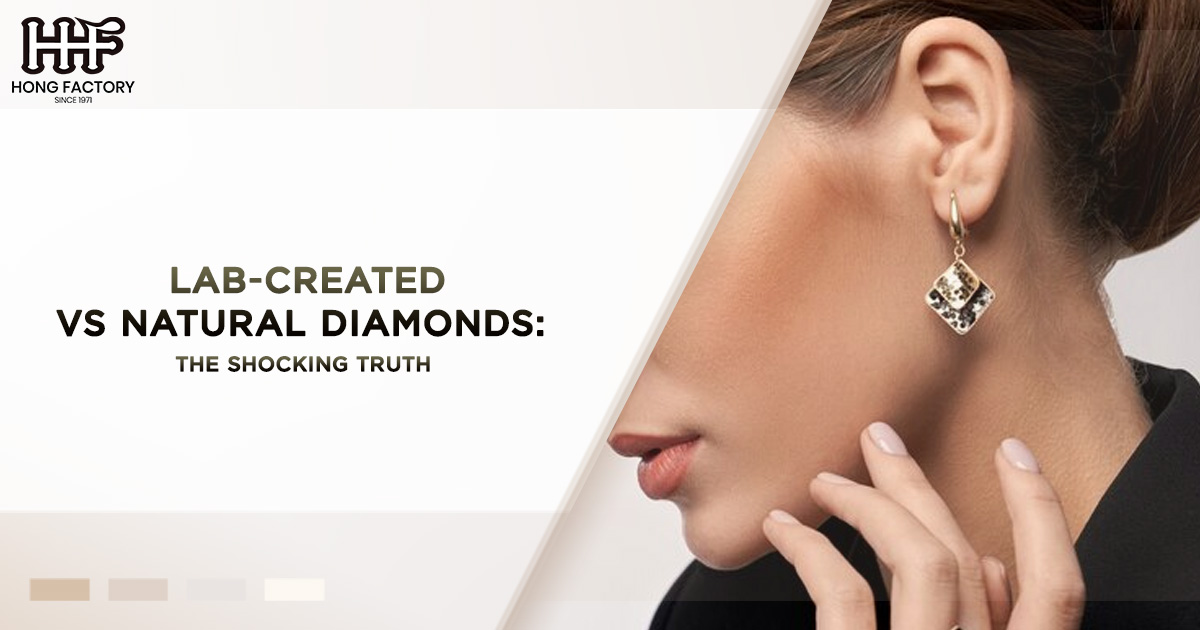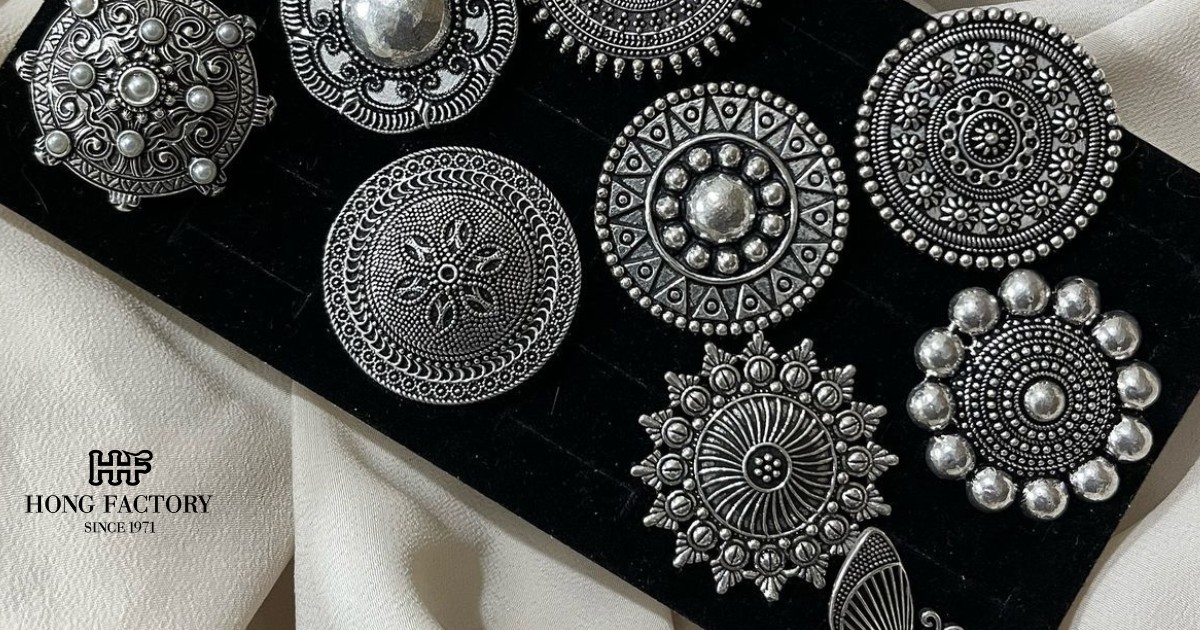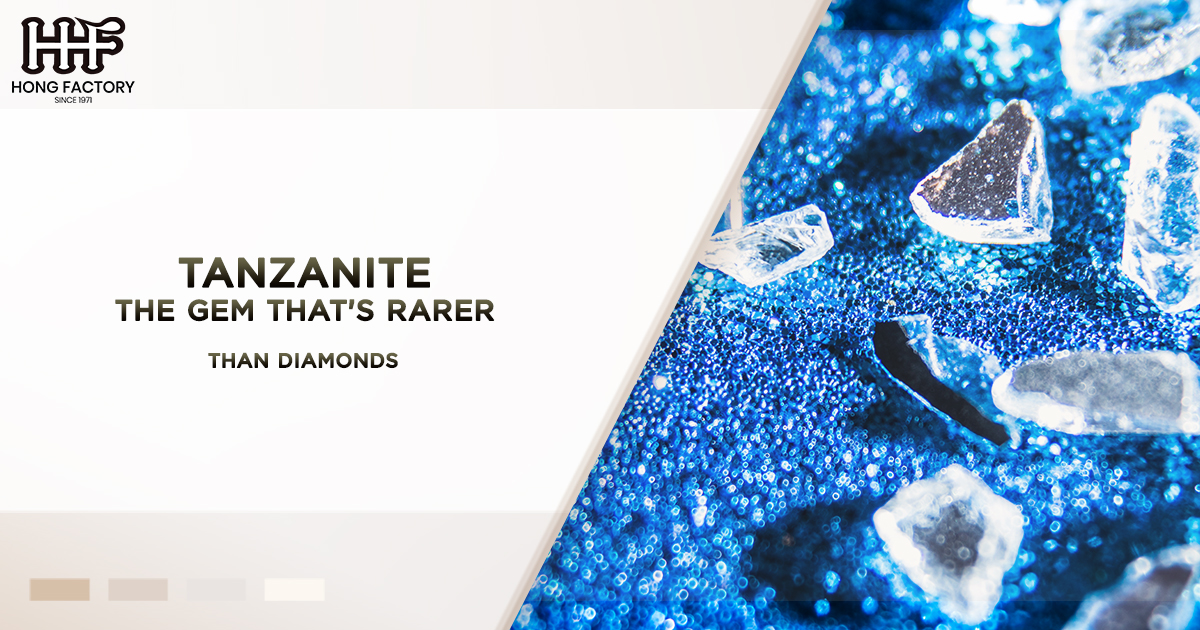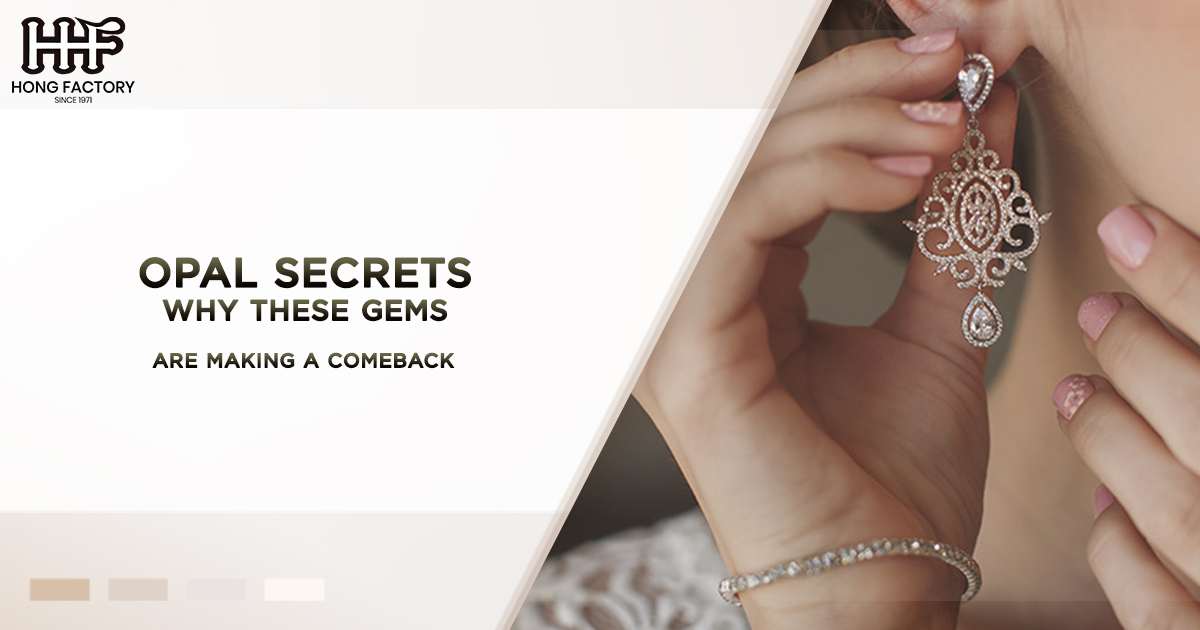In recent years, the diamond industry has been revolutionized by the emergence of lab-created diamonds, also known as synthetic diamonds or lab diamonds. These man-made gems have sparked a debate among consumers and jewelers alike, challenging the long-standing dominance of natural diamonds. This article explores the key differences between lab-created and natural diamonds, shedding light on their manufacturing processes, quality, pricing, and identification methods.
What Are Lab-Created and Natural Diamonds?
Before diving into the specifics, it’s important to understand what distinguishes a natural diamond from a lab-created (synthetic) diamond.
- Natural Diamonds – Formed over billions of years under intense heat and pressure deep within the Earth, natural diamonds are mined from beneath the surface. They are prized for their rarity and unique connection to nature.
- Lab-Created Diamonds – These diamonds are grown in controlled laboratory environments using advanced technology. Despite being man-made, they are chemically, physically, and optically identical to natural diamonds.
It’s important not to confuse lab-created diamonds with diamond alternatives like cubic zirconia or moissanite. While alternatives mimic the appearance of diamonds, they are entirely different materials.
Manufacturing Process
Natural Diamonds
Natural diamonds are formed deep within the Earth’s crust over billions of years under extreme heat and pressure. These precious gems are created when carbon atoms crystallize into a unique structure, resulting in the hardest known natural substance. Mining companies extract these diamonds through complex and often environmentally impactful operations.
Lab-Created Diamonds
In contrast, lab diamonds are produced in controlled laboratory environments using advanced technological processes. There are two primary methods for creating synthetic diamonds
- High Pressure High Temperature (HPHT) – This method mimics the natural diamond formation process by subjecting carbon to extreme pressure and temperature in a controlled setting.
- Chemical Vapor Deposition (CVD) – This newer technique involves growing diamond crystals from a hydrocarbon gas mixture in a low-pressure chamber.
Both processes can produce diamonds in a matter of weeks or months, significantly faster than the billions of years required for natural diamond formation.
Quality Comparison
When it comes to quality, lab-created diamonds and natural diamonds are remarkably similar. In fact, they are chemically, physically, and optically identical, making it challenging even for experts to distinguish between the two without specialized equipment.
Chemical Composition
Both lab diamonds and natural diamonds are composed of pure carbon arranged in a crystal structure. This identical chemical makeup means that synthetic diamonds possess the same hardness, brilliance, and fire as their natural counterparts.
Clarity and Color
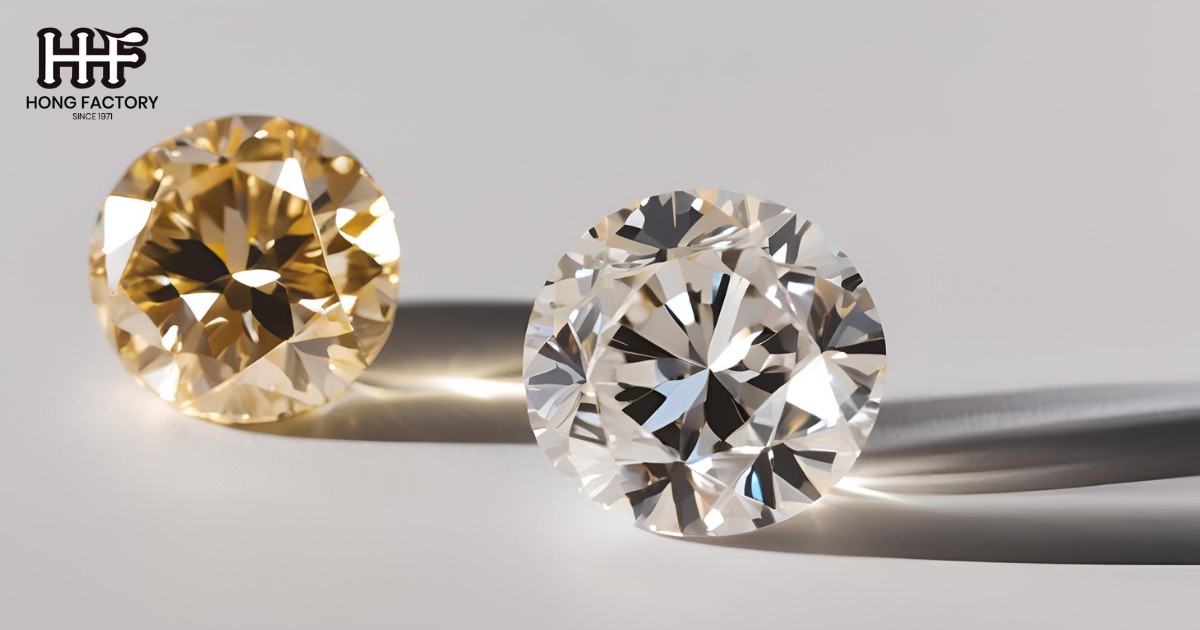
Lab-created diamonds often have fewer inclusions and better clarity than natural diamonds because of the controlled environment in which they are produced. They can be created in a wide range of colors, including rare fancy colors that are extremely expensive in natural diamonds.
Cut and Carat
The cut and carat weight of both types of diamonds are determined by human intervention, so there is no inherent difference in these aspects between lab-created and natural diamonds.
Price Differences
One of the most significant differences between lab-created and natural diamonds lies in their pricing. Lab diamonds are generally 30-40% less expensive than natural diamonds of comparable quality and size. This price difference can be attributed to several factors
- Production costs – The manufacturing process for lab diamonds is less resource-intensive and time-consuming than mining natural diamonds.
- Supply and demand – Natural diamonds are finite resources, while lab diamonds can be produced in larger quantities, affecting their relative scarcity and value.
- Market positioning – Natural diamonds still benefit from their traditional appeal and marketing efforts by the diamond industry.
It’s worth noting that while lab diamonds are less expensive, they do not appreciate in value like natural diamonds, which are often considered investment pieces.
How to Identify Each Type
Distinguishing between lab-created and natural diamonds can be challenging, even for experienced jewelers. However, there are several methods used to identify the origin of a diamond
Visual Inspection
To the naked eye or under standard magnification, lab diamonds and natural diamonds appear identical. However, some lab-grown diamonds may exhibit subtle growth patterns or fluorescence that can be detected by trained professionals.
Spectroscopic Analysis
Advanced spectroscopic techniques can reveal differences in the crystal structure and trace elements present in lab-created versus natural diamonds.
Diamond Certificates
Reputable gemological laboratories issue certificates for both natural and lab-created diamonds, clearly stating the diamond’s origin. Always request a certificate when purchasing a diamond.
Specialized Equipment
Jewelers and gemologists use specialized devices like the DiamondView™ or Diamond Screening Devices to detect the unique fluorescence patterns of lab-created diamonds.
The Future of Diamonds
As technology advances and consumer preferences evolve, the diamond industry is experiencing a significant shift. Lab-created diamonds are gaining popularity, especially among younger, environmentally conscious consumers who appreciate their ethical and sustainable nature.
Environmental Impact
Natural diamond mining can have substantial environmental consequences, including habitat destruction and carbon emissions. Lab diamonds, on the other hand, have a smaller environmental footprint, making them an attractive option for eco-friendly consumers.
Ethical Considerations
The natural diamond industry has made strides in addressing ethical concerns related to conflict diamonds. However, lab diamonds eliminate these concerns entirely, as their origin is always known and traceable.
Market Trends
While natural diamonds continue to dominate the market, lab-created diamonds are experiencing rapid growth. Many major jewelry retailers now offer lab diamond options alongside natural diamonds, giving consumers more choices.
Conclusion
The emergence of lab-created diamonds has undoubtedly disrupted the traditional diamond market. With their identical physical properties, lower prices, and ethical advantages, synthetic diamonds present a compelling alternative to natural diamonds. However, the allure and perceived value of natural diamonds remain strong for many consumers.
Ultimately, the choice between lab-created and natural diamonds comes down to personal preference, budget, and values. As technology continues to advance and consumer awareness grows, it’s likely that lab diamonds will play an increasingly significant role in the future of the diamond industry.
Whether you choose a lab-created or natural diamond, it’s essential to purchase from reputable sources and always request proper certification. By understanding the differences and similarities between these two types of diamonds, consumers can make informed decisions that align with their preferences and values.
